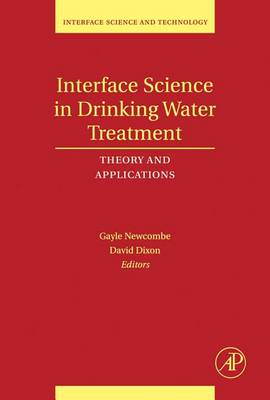It is difficult to imagine anything more important to the human population than safe drinking water. Lack of clean drinking water is still the major cause of illness and death in young children in developing countries. In more fortunate communities, where water treatment is practiced, the primary aim of water authorities is to provide water that is free from pathogens and toxins. Most countries now have water quality regulations, or guidelines, which are driving water authorities to produce purer water, with the minimum of contamination from natural or man-made origin. At the same time, consumers are demanding that chemicals added during the treatment of drinking water be kept to a minimum. As a consequence, conventional clarification methods are being challenged to comply with the new regulations and restrictions and our understanding of the mechanisms involved is being tested as never before.
Interface Science in Drinking Water Treatment contains a rigorous review of water treatment practices from a fundamental viewpoint. The book includes material from leading experts in the field of water treatment, reviewing their specific fields of expertise against a background of colloid and surface chemistry, and examines each step of the journey from source to consumer tap. It therefore permits the reader to develop a deep understanding of the complex processes taking place and of the necessary treatments which are vital for the provision of safe and palatable drinking water. The book is aimed at researchers, educators and practitioners in science and engineering, particularly those involved in water treatment and colloidal chemistry.
- ISBN10 0080530516
- ISBN13 9780080530512
- Publish Date 14 May 2014 (first published 6 September 2006)
- Publish Status Active
- Publish Country GB
- Imprint Academic Press
- Edition New ed.
- Format eBook
- Pages 376
- Language English
